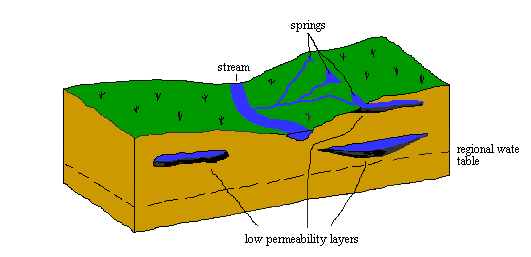


Gravity is the dominant driving force in ground water movement in unconfined aquifers. As such, under natural conditions, ground water moves "downhill" until it reaches the land surface at a spring or through a seep in the side or bottom of a river bed, lake, wetland, or other surface water body. Ground water can also leave the aquifer via the pumping of a well. The process of ground water outflowing into a surface water body or leaving the aquifer through pumping is called discharge.
Many rivers, lakes, and wetlands rely heavily on ground water discharge as a source of water. During times of low precipitation, these bodies of water would not contain any water at all if it were not for ground water discharge.
It is important to note that because of discharge, contaminants in ground water can flow into surface water bodies. This process can make the removal of contamination very complex.

| © Copyright |